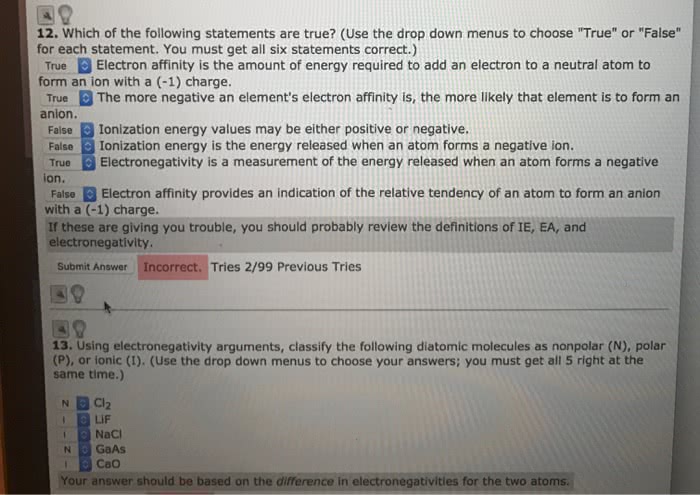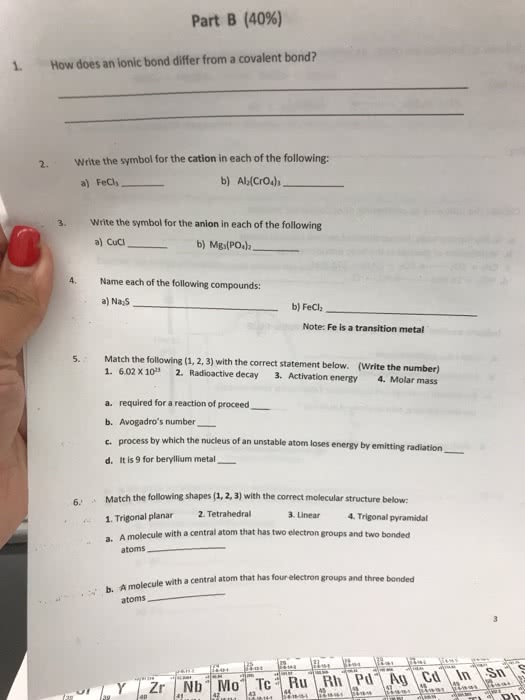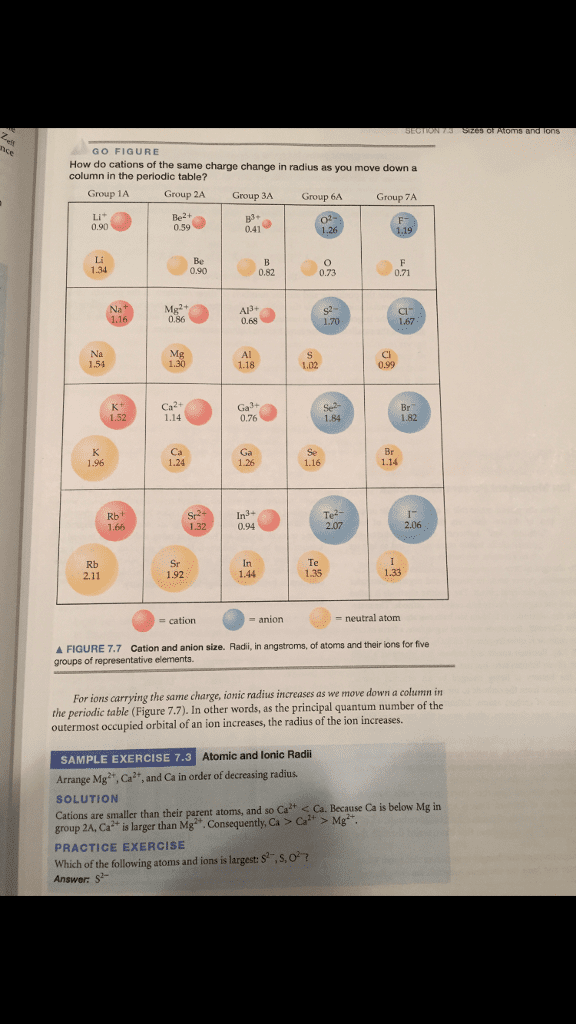CHEM 1300 Lecture Notes - Lecture 11: Electron Configuration, Noble Gas, Sodium Chloride
Document Summary
One type of bond is the ionic bond. Ionic bonds form because of the electrostatic attraction between a positive cation and a negative anion. The energy of attraction can be approximated with the equation (cid:1829)(cid:3046) + 2(cid:1834)(cid:1006)(cid:1841) K is a constant 2. 31 (cid:1005)(cid:1004) (cid:1005)(cid:1010)(cid:1862)(cid:1868)(cid:1865)/(cid:1831)(cid:1006) or 8. 99 (cid:1005)(cid:1004)9(cid:1840)(cid:1865)(cid:1006)/(cid:1829)(cid:1006) (cid:1869)(cid:1005)is the electron charge of the cation. (cid:1869)(cid:1006)is the electron charge of the anion. *do(cid:374)"t ha(cid:448)e to (cid:373)e(cid:373)orize, its o(cid:374) the for(cid:373)ula sheet. R is the distance between two ions. The lattice energy is the energy released when an ionic solid decomposes into gaseous ions. (the process is called sublimation) Nacl (cid:894)s(cid:895) na+(cid:894)g(cid:895) + c(cid:1864) (g) e = le = 769 kj/mol. The lattice energy depends on electrical and the sizes of the ions. usually, the greater the charge of the cations and anions, the greater the lattice energy. (cid:1840)+ c(cid:1864) both have noble gas (cid:1857) configuration. (cid:1827)(cid:1864)(cid:1006)(cid:1841)(cid:1007) has one of the largest lattice energies known.




